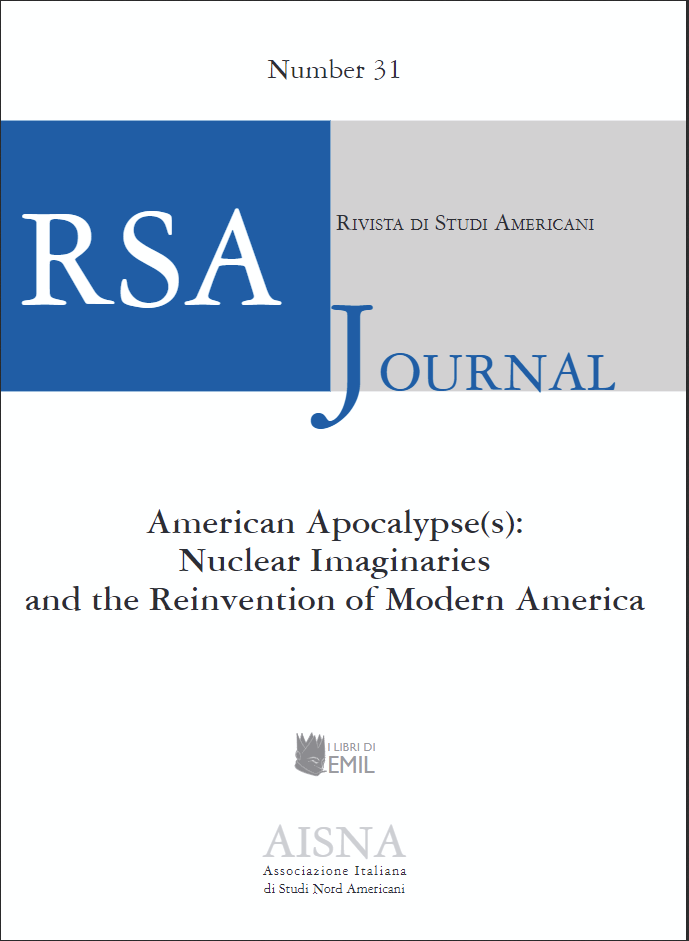Apocalyptic Allegories
Resisting Strategic Nuclear Imaginaries through Critical Literacy
DOI:
https://doi.org/10.13135/1592-4467/8496Keywords:
nuclear, apocalyptic, literacy, American nuclear cultureAbstract
Eschatological expressions underwent an epistemic shift with the Trinity tests on July 16, 1945 from an imaginative practice of predicting futurity to a cataclysmic vision of complete annihilation. Motifs of literacy, while seldom discussed, share a self-reflexive relation with nuclearization and cultural productions of the apocalypse, since the specialized nature of nuclear technology transforms nuclear discourses into signifiers of power: a form of cultural capital that emerges from and simultaneously legitimizes nuclear weapons. This intervention emphasizes how the epistemic violence of strategic nuclear imaginaries – employed through the constant anxiety of an anticipated nuclear catastrophe – can be countered through a critical literacy opposed to both martial ideologies as well as the instrumentalization of weaponized nuclear technology. Considering the current turbulence of an always already global nuclear landscape, this article examines two contemporary cinematic renderings of post-nuclear apocalyptic spaces, The Book of Eli (2010) and The Matrix (1999), to argue that any act of culturally representing/articulating the nuclear disaster is always an act of tangible recovery. In conclusion, I note that by uncovering the terrible realities of nuclear conflict and the dehumanization implicit in sophisticated techno-strategic paradigms, these artifacts from American nuclear culture, which are also coextensive with nuclear countercultures everywhere, show the emancipatory possibilities of humane community-oriented critical literacies.
Downloads
Published
Issue
Section
License
RSAJournal applies a CC BY-NC-ND license to all its contributions. This license enables reusers to copy and distribute the material in any medium or format in unadapted form only, for noncommercial purposes only, and only so long as attribution is given to the creator. CC BY-NC-ND includes the following elements:
- BY: credit must be given to the creator.
- NC: Only noncommercial uses of the work are permitted.
- ND: No derivatives or adaptations of the work are permitted.
Authors who publish with this journal agree to the following terms:
- Authors retain the copyright and full publishing rights for their submissions to the journal.
- Authors grant the journal right of first publication with the work simultaneously licensed under a Creative Commons Attribution-NonCommercial-NoDerivatives 4.0 International License that allows others to share unedited work for non-commercial purposes with an acknowledgement of the work's authorship and initial publication in this journal.
- Authors are able to enter into separate, additional contractual arrangements for the non-exclusive distribution of the journal's published version of the work (e.g., post it to an institutional repository or publish it in a book), with an acknowledgement of its initial publication in this journal.




